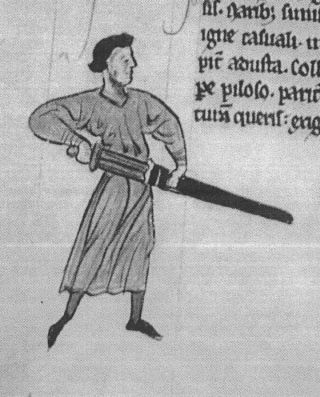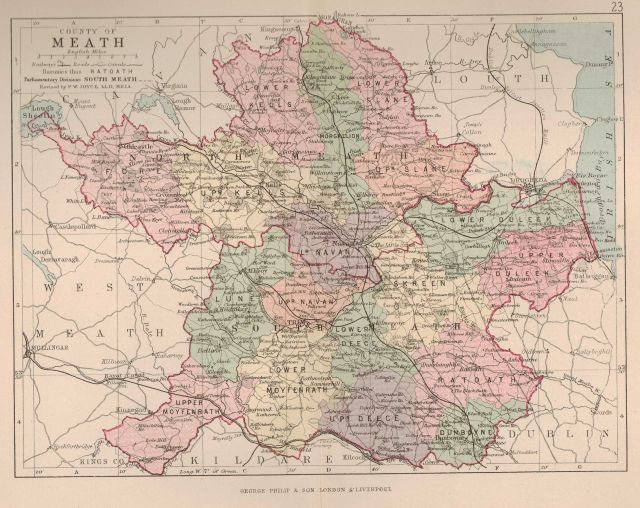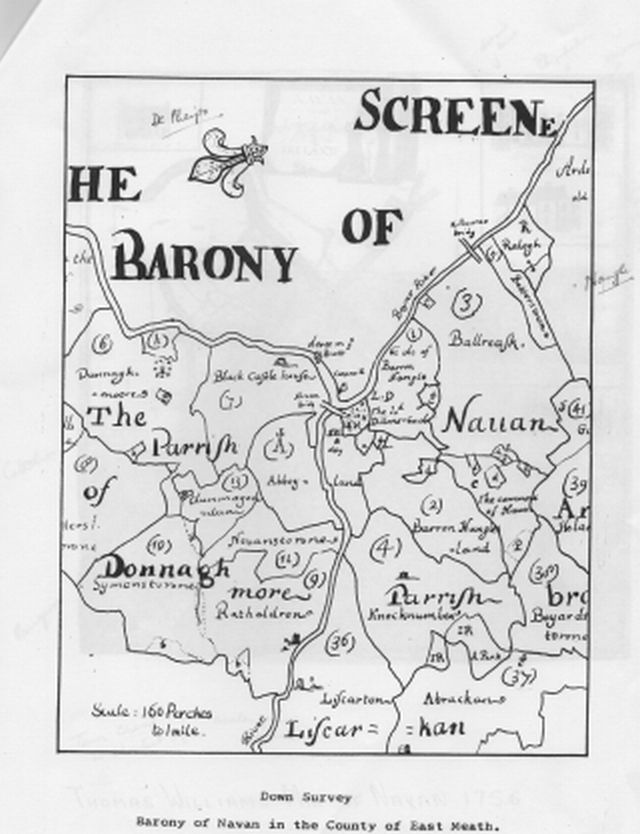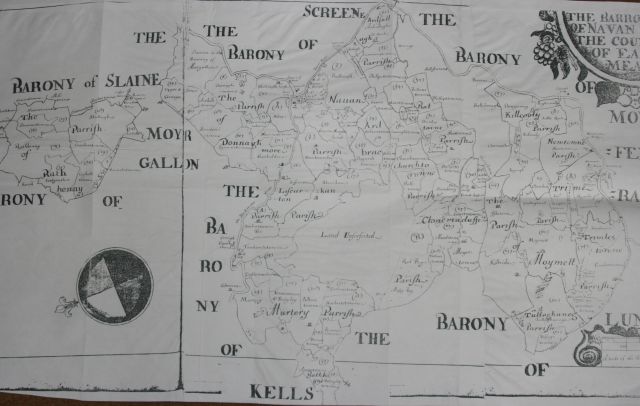The Baronies of Meath
See also: Noblemen in the Barony of Navan 1500's
The Baronies of Meath
In 1172 King Henry ll granted the ancient Kingdom
of Meath to his knight

Hugh de Lacy. (right)
Under the Feudal System, De Lacy divided his Liberty of Meath among his closest allies, his Barons.
These large areas are called Baronies.
They approximated to the political divisions of
pre-Norman Meath - the Tuatha of the old Gaelic Chieftains.
The map below shows the
Baronies in the modern County of Meath.
There are about 12 Baronies -
Navan Upr. and Lr., (D'Angulo / Nangle)
Skryne (de Feypo),
Morgallion (de Nangle), Lune (De Muset Messet/ Misset), Ratoath (De Lacy),
Fore (De Lacy), Slane (Fleming),
Kells (De Lacy), Moyfenrath, Dunboyne (De Petit?), Deece (De Hose /Hussey).
Duleek and Moyagher.
Later still these baronies became in ecclesiastical terms, the Deaneries of the Meath Diocese.
*****
Source: Ireland under the Normans, G.H. Orpen, (reprinted, Four Courts Press 2005)
***
The Parliamentary Gazetteer of Ireland, 1845
Navan Lower Barony, a barony of the county of Meath, Leinster.
It is bounded, on the north, by Upper Kells and Morgallion; on the north east, by Upper Slane; on the east and south east, by Skreen; on the south, by Upper Navan; and, on the west, by Lune and Upper Kells.
Length, south eastward, 8 1/2 miles; extreme breadth, 6; area, 25,835 acres, 1 rood, 38 perches,of which 82 acres, 1 rood, 17 perches are in the river Boyne. The surface is a low, flat, and prevailingly fertile portion of the great plain of Meath. The Boyne flows along the eastern boundary. This barony contains part of the parishes of
Balrath Boyne and Donaghpatrick,
and the whole of the parishes of Ardbraccan,
Ardsallagh,
Churchtown,
Donaghmore,
Dunmoe,
Liscarton,
Martry,
Navan,
and Rataine.
The only town is the chief part of Navan; and the principal village is Bohermeen. Pop., in 1831, 16,234; in 1841, 15,873. Houses 2,572. Families employed chiefly in agriculture, 1,708, in manufactures and trade; 763, in other pursuits, 365 Families dependent chiefly on property and professions; 60, on the directing of labour; 1,055, on their own manual labour; 1,567, on means not specified; 154 Males at and above 5 years of age who could read and write; 2,670, who could read but not write; 1,312, who could neither read nor write; 3,166 Females at and above 5 years of age who could read and write; 1,264, who could read but not write; 1,537, who could neither read nor write; 4,162.
Lower Navan Barony lies partly within the Poor Law Union of Navan, and partly within that of Kells. The total number of tenements valued is 2,743; and of these, 1,844 were valued under £5; 323 under £10; 146 under £15; 91 under £20; 90, under £25; 45 under £30; 68 under £40; 25 under £50; and 111 at and above £50. The annual value of the property rated is £28,734 lis. 3d.; and the sum levied under the grand warrant of summer, 1841, was £943 18s.
Navan Upper Barony
NAVAN (upper), a barony of the county of Meath, Leinster. It is bounded, on the north, by Lower Navan; on the east, by Lower Deece; on the south, by Lower Moyfenragh ; and, on the west and north west, by Lune. Length, eastward, 7 1/2 miles; extreme breadth, 5; area, 17,651 acres, 3 roods, 29 perches, of which 92 acres, 2 roods, 33 perches are in the river Boyne. The surface is low and flat, but fertile and ornate. The Boyne traces most of the southern boundary, and all the eastern boundary. The prevailing soil of the land is a rich earth of various depths, on a substratum of limestone gravel, limestone rock, and in some places ferruginous clay and gravel. But the lands along most of the immediate banks of the Boyne, downward from Trim, consist chiefly of a cold clay; and though they might be greatly and very facilely improved by intermixture with the immediately subjacent stratum of limestone gravel, they are allowed to remain in too cold and retentive a condition.
This barony contains part of the parish of Trim, and the whole of the parishes of
Bective,
Clonmacduff,
Kilcooley,
Moymet,
Newtownclonnun,
and Tullaghanoge.
The only town is part of Trim. Pop., in 1831, 4,857; in 1841, 4,860. Houses 836. Families employed chiefly in agriculture, 599; in manufactures and trade, 170; in other pursuits, 90. Families dependent chiefly on property and professions, 28; on the directing of labour, 243; on their own manual labour, 583; on means not specified, 5. Males at and above 5 years of age who could read and write, 725; who could read but not write, 418; who could neither read nor write, 1,021. Females at and above 5 years of age who could read and write, 364; who could read but not write, 517 ; who could neither read nor write, 1,243.
Upper Navan lies partly within the Poor Law union of Trim, and partly within that of Navan. The total number of tenements valued is 836; and of these, 516 were valued under £5, 104, under £10, 37, under £15, 30, under £20, 16, under £25, 12, under £30, 22, under £40, 13, under £50, and 86, at and above £50. The annual value of the property rated is £16,763 2s. 6d.; and the sum levied under the grand warrant of summer, 1841, was £567 7s. 6d.

(above) The Baronies in County Meath.
*******
Below is part of the Down Survey Map of the Barony of Navan.
The Down Survey is a mapped record of land ownership in 1654. The Survey was organised by Sir William Petty. The barony was the basic division of the Survey. The survey was basically concerned with lands which were confiscated after the Cromwellian victory. Lands identified as being owned by Protestants were not included, and were left blank as "unforfeited lands".
(note: The orientation of the 2 maps below is not North /South. It would need to be turned about 180 degrees in a clockwise direction to make sense. )

(below) Petty's Down Survey map of the entire Barony of Navan is shown below. Note the large tract of unforfeited land at the lower edge of the map.
